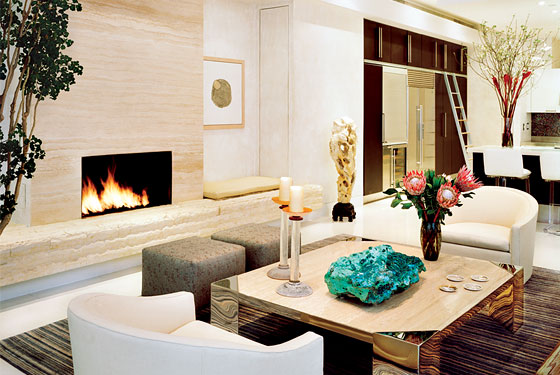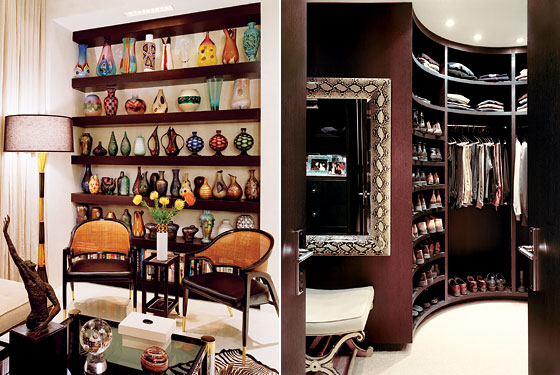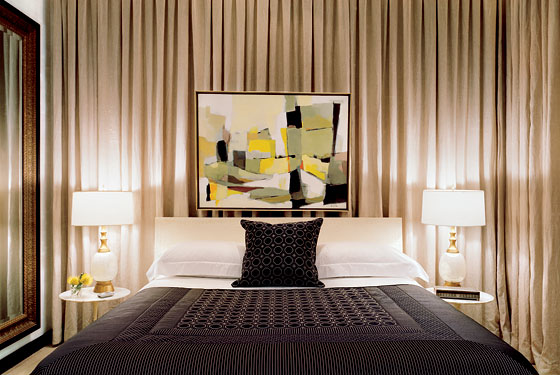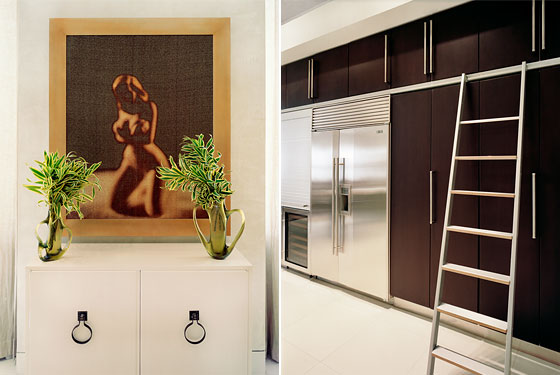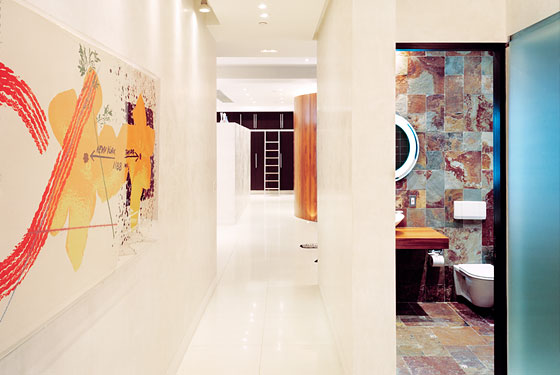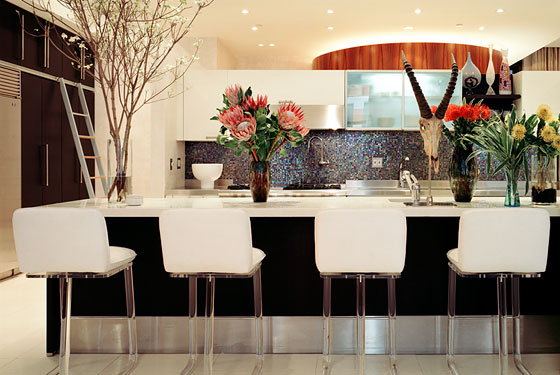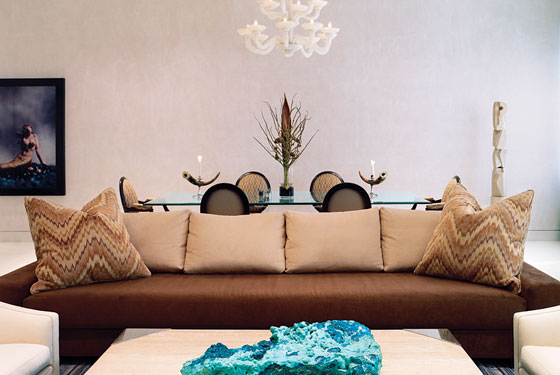
Looking back at the pop landscape of the early eighties can provoke pangs of dread. Running shoes on working women? Asymmetrical haircuts and eyeliner on men? Black Pirelli tile on the floor, gray carpet on the wall, neon color splashes on everything?
Stay calm. The mid-century revival didn’t mean resuscitating poodle skirts and the Technicolor palette, and there’s good design lurking beneath all that mousse. After many prestigious furniture companies went under or slashed quality in the mid-seventies recession, some of the best design went private. Designers-cum-decorators including New Yorkers Karl Springer and Angelo Donghia and Californians Charles Hollis Jones and Michael Taylor (widely acknowledged as the man who popularized the pillow-denting styling flourish that became known as “the chop”) routinely had lavish work custom-made for clients. Twenty-five years later, there’s a lode of interesting, beautifully crafted pieces still awaiting a wide audience.
Just as the mid-modern revival was fueled by enthusiastic dealers like Mark McDonald, circa-1980 design has the New York furniture dealer Evan Lobel squarely in its gold-plated corner. “I love the late seventies and eighties,” says Lobel. He’s even writing a book on Springer, his favorite designer, who’s best known for cladding simple but dramatic pieces of furniture in sharkskin and python. Subtle they’re not. “There’s a certain decadence to that era that I find really appealing. The scale tends to be large, and the materials tend to be luxe and rich, which makes the pieces themselves larger than life.”
And if his new Bond Street store doesn’t make the moment’s appeal clear, Lobel’s splashy Union Square apartment does. Outfitted with white granite floors, beige-draped windows and walls, and enough track lighting to melt a glacier, the apartment is the perfect place to showcase the oversize, Chablis-and-brie-fueled extremes of which Lobel is so enamored. The sum total is that rare thing—a very polished bachelor’s apartment, harking back to a time before mixing became the predominant aesthetic and done was not a four-letter word. The centerpiece is a massive Christian Liaigre sofa, ornamented with two giant Missoni-esque pillows, meticulously chopped. It’s the perfect place to sit and contemplate the meteorlike chunk of chrysocolla, one of Lobel’s favorite possessions.
He takes the eighties commitment only so far, though (no razor-blade marks on the massive coffee table). Lobel’s primary vice is thoroughly contemporary. “I’m a workaholic,” he says. “I just want someplace fantastic to come home to.”
